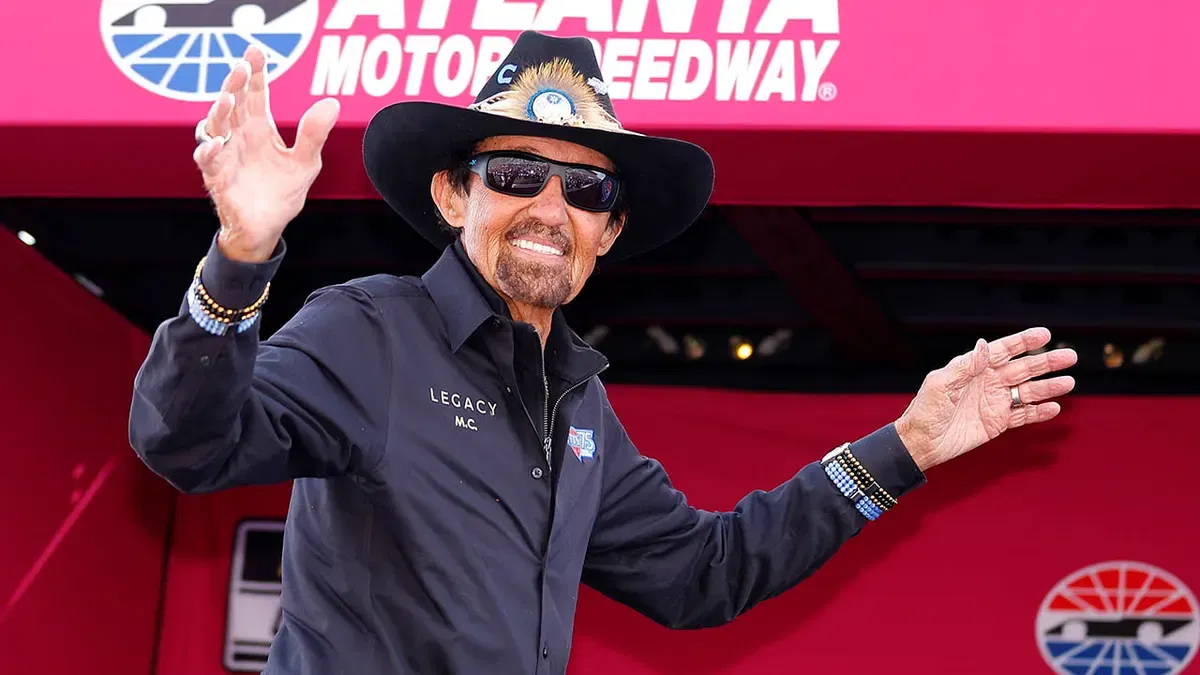

NASCAR’s no stranger to tempers flaring, and nothing gets fans buzzing like the infamous “one-finger salute.” Over the years, that gesture’s been a go-to for drivers letting off steam. Picture Bristol in 1995: Dale Earnhardt and Rusty Wallace get tangled up, and Rusty, steaming mad, throws a big, dramatic middle finger out the window as he laps the half-mile bullring. The cameras caught every second, and fans went wild for the raw, short-track drama.
Watch What’s Trending Now!
Fast forward to 2010 at Pocono, where a young Joey Logano, scrapping with Kevin Harvick, got spun out and later took a jab, saying Harvick’s wife “wears the fire suit in that family.” But the real highlight? Logano’s bird flying high on the cool-down lap, a perfect snapshot of frustration boiling over. And then there’s Tony Stewart, “Smoke” himself, who might hold the record for most middle fingers flashed. From rival drivers to NASCAR officials to pesky photographers, Stewart let it fly, even copping a fine in 2012 for flipping off a camera during Dover practice. Back in Richard Petty’s day, though, drivers didn’t bother with gestures; they settled scores with bumpers.
When Jeff Gluck sat down with Richard Petty for The Athletic’s 12 Questions series, he dug into whether drivers in Petty’s era ever flipped each other off. Petty’s answer was pure gold: “No, we just used a bumper. You know what I mean? If you had trouble with somebody, you tried to take care of it right then. Now, when the race is over, people get healed with each other: They start telephoning each other, faxing each other and stuff. We didn’t do that.”
ADVERTISEMENT
That’s vintage Petty, summing up the no-nonsense vibe of NASCAR’s 1960s and 1970s. Back then, drivers didn’t need hand gestures to make a point; a tap from a chrome bumper sent the message loud and clear. Take the 1979 Daytona 500 as an exhibit, where Donnie Allison and Cale Yarborough wrecked on the last lap and ended up brawling in the infield, all on live TV.
Petty, who snuck through to win that race, saw firsthand how disputes were settled in the heat of the moment, not with post-race texts or tweets. His era was physical, direct, and unapologetic, with drivers like him using their cars to sort out rivalries right there on the track. That approach kept tempers in check by the race’s end, leaving little room for lingering drama in a sport that was as much about survival as speed.
Petty drove the point home: “That crowd we came with, as quick as a race was over, they got it over with. And then everybody got in the same car and went home. It was instantaneous. Get it behind you. Don’t dwell on anything that’s going to upset you.”
ADVERTISEMENT
That’s the heartbeat of old-school NASCAR, when the sport was a tight-knit traveling circus. Drivers like Petty and his father, Lee, often piled into station wagons together, towing race cars on open trailers across the Southeast. With no big sponsors or 24/7 media, they had to move on fast; next week’s race was always around the corner, and you’d likely be sharing a ride with the guy you just bumped.
Petty was known for letting grudges slide, focusing on the next race rather than stewing over crashes. Hence, his call to “get it behind you” is a lesson for today’s drivers, who too often let gestures and social media keep feuds alive long after the checkered flag.
ADVERTISEMENT
Kyle Petty misses NASCAR’s icons
NASCAR’s always been about larger-than-life drivers, not just teams, and Richard Petty thinks that’s exactly what’s missing today. When Josh Berry asked him about his favorite memory racing with the Wood Brothers in the 12 Questions series, Petty got nostalgic, saying, “Those were the growing days of NASCAR, and you basically had just two people who were racing. There weren’t 14 in one line and 14 in the other. It was two cars racing, and the grandstand stood up for the whole last part of the race. So the excitement of stuff like that, I don’t see it in racing today. How do you bring it back? I don’t know.”
He recalled tearing up Wood Brothers cars in last-lap battles but also sharing victories with them, back when races felt like duels that had fans on their feet. Petty traced NASCAR’s iconic lineage: his dad Lee Petty, Junior Johnson, and Fireball Roberts in the early days, then David Pearson, Bobby Allison, and Cale Yarborough, followed by Darrell Waltrip, Dale Earnhardt, Jeff Gordon, and Jimmie Johnson. Each era had a “fox” leading the pack, a star who defined the sport.
ADVERTISEMENT
Today, he sees a problem: “We’ve got no leaders. We’ve had, what, 15 different winners this year? That does not create a following. No matter what happens, you need a fox out front. We don’t have any leader, whether he’s good, bad or indifferent.”
With 15 different winners in 2025, the field is deep but lacks a standout to rally fans like Petty once did. His frustration with altercations ties into this; gestures and spats distract from building that next iconic figure. As the Enjoy Illinois 300 at Gateway looms, Petty is urging drivers to skip the drama and race like the legends who made NASCAR a household name.
ADVERTISEMENT
ADVERTISEMENT
ADVERTISEMENT

